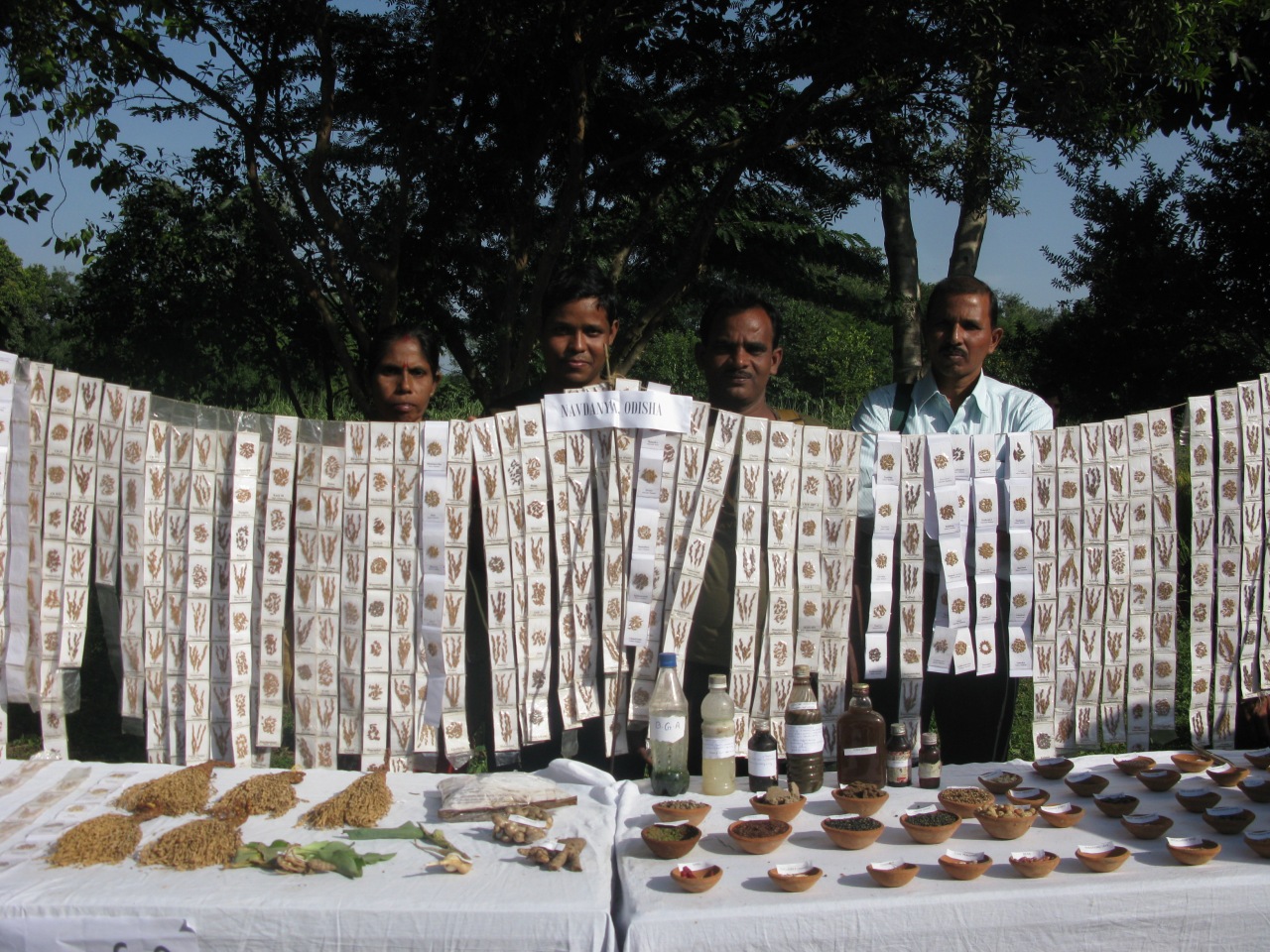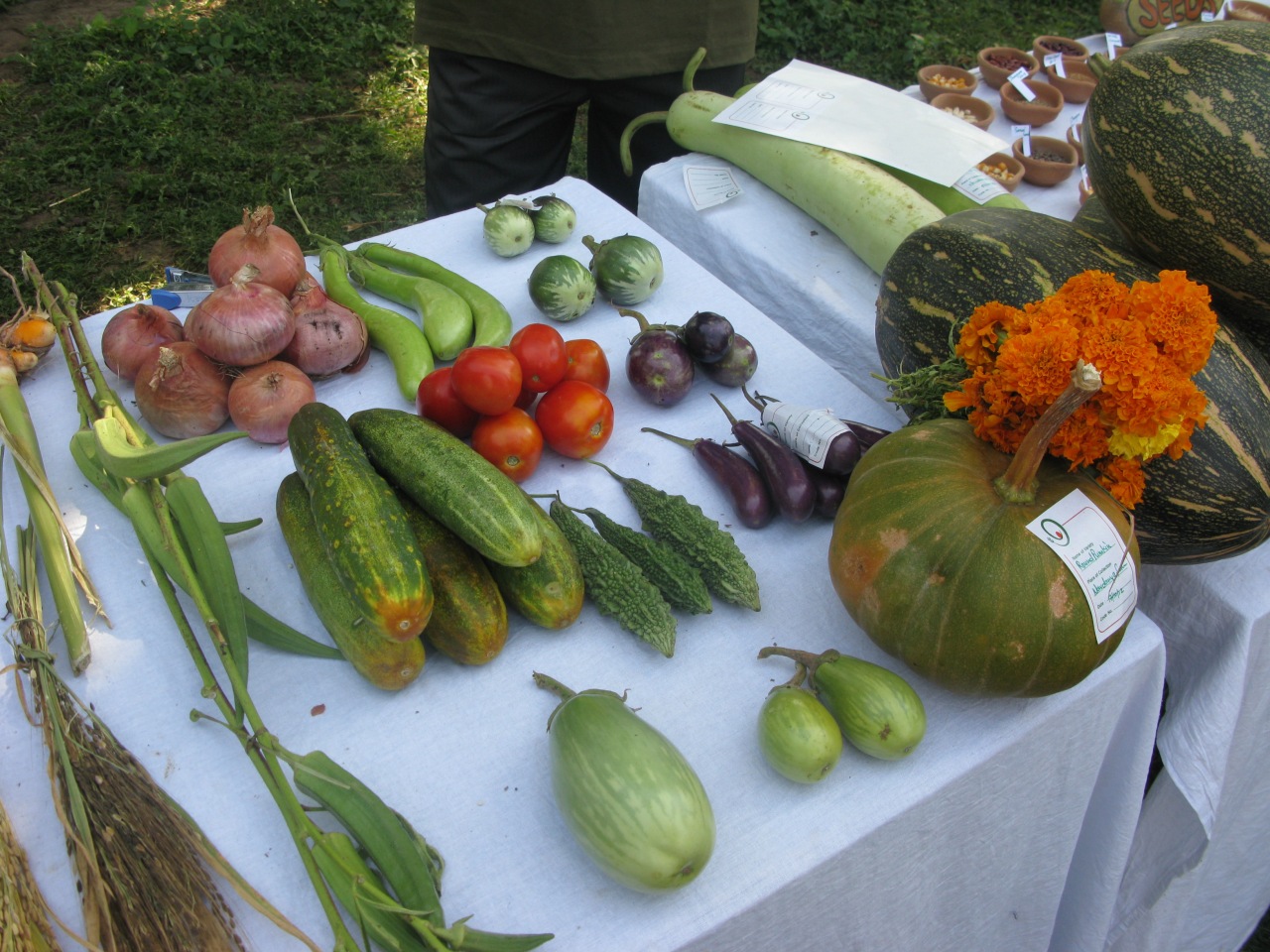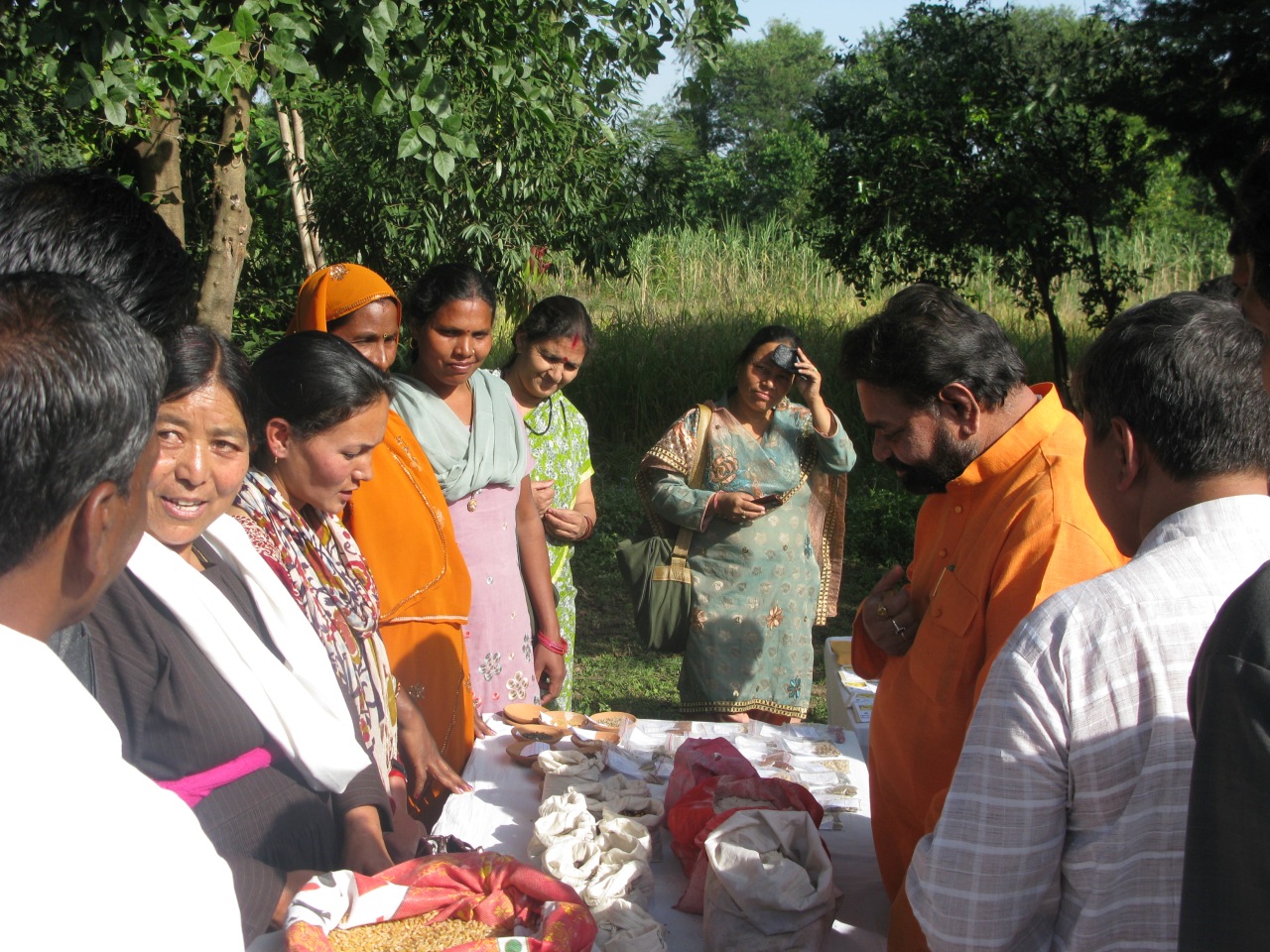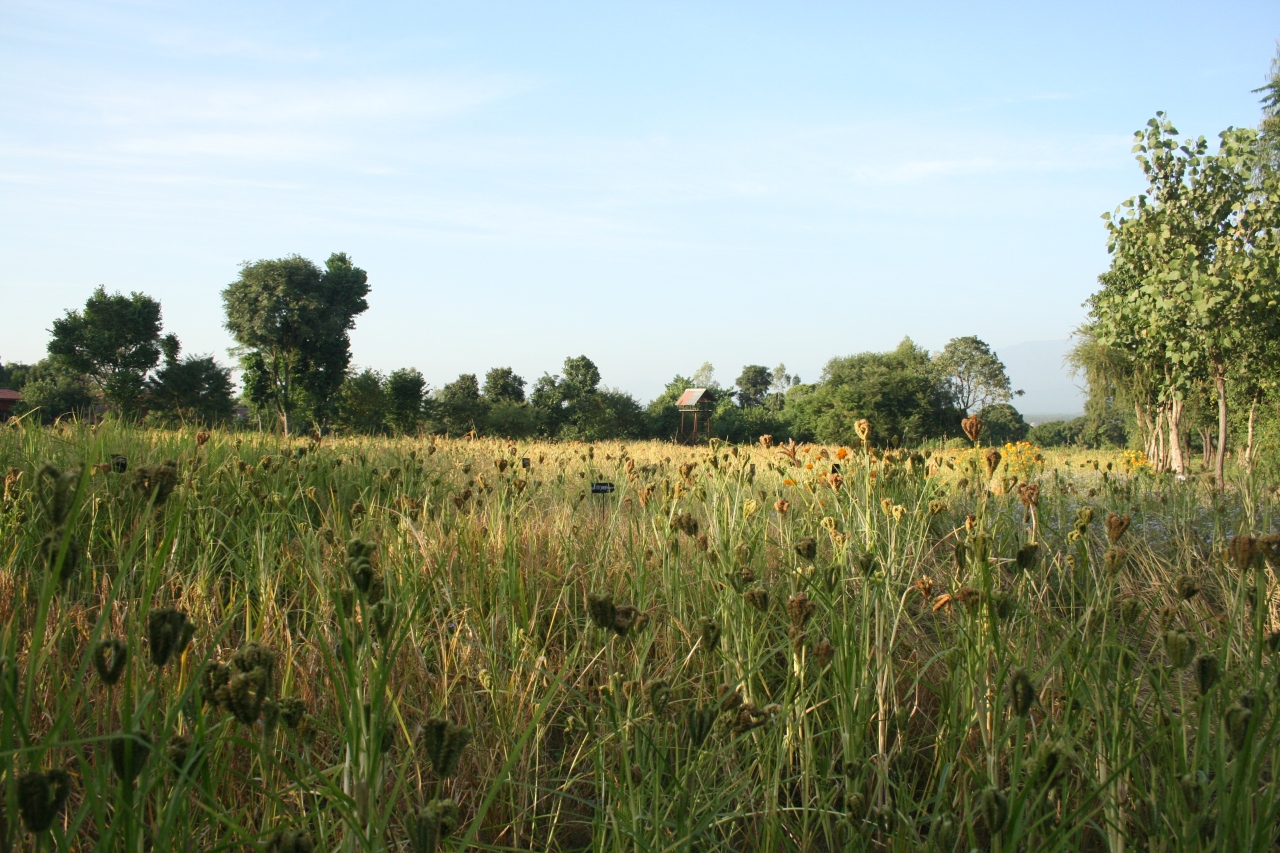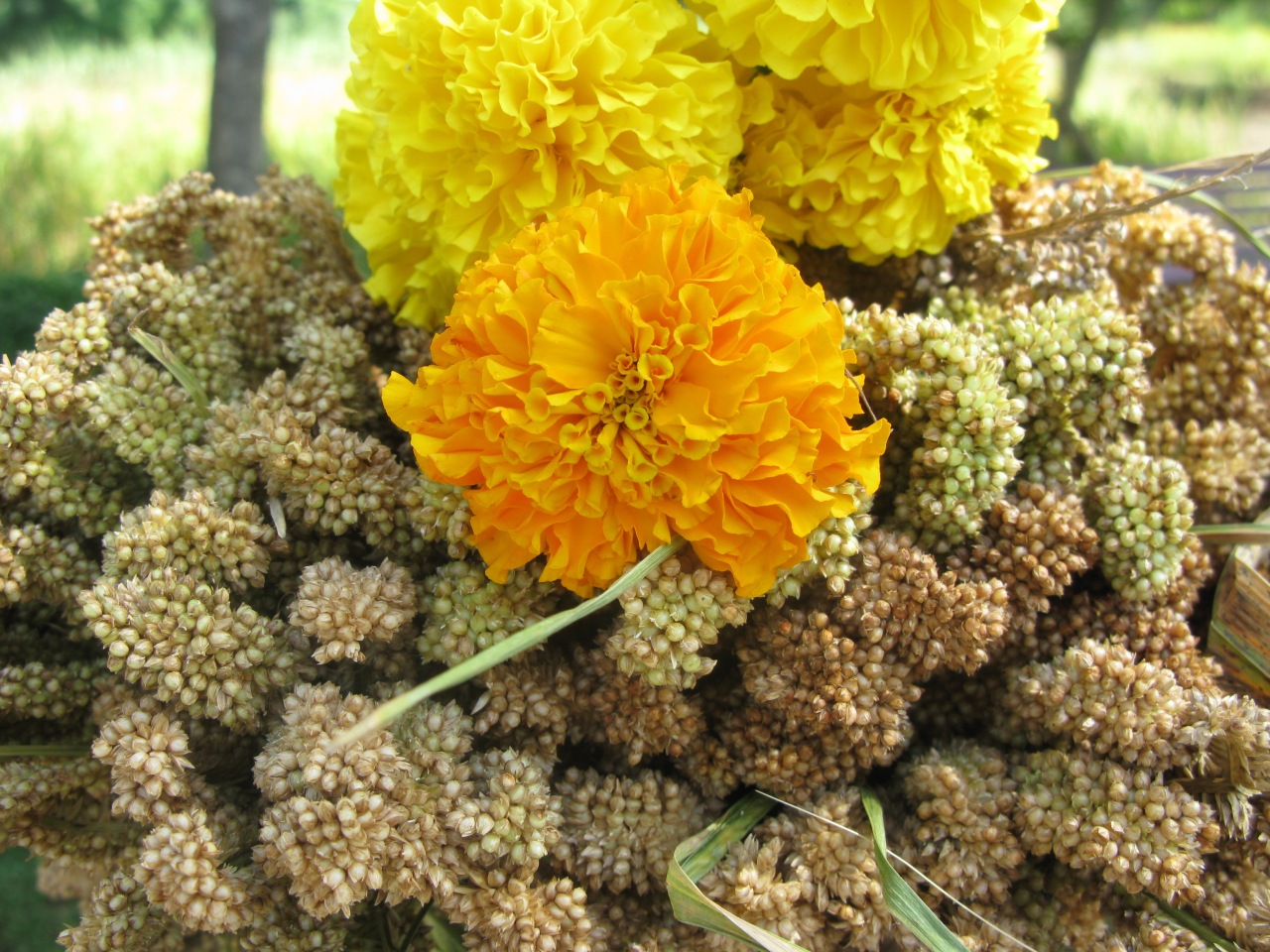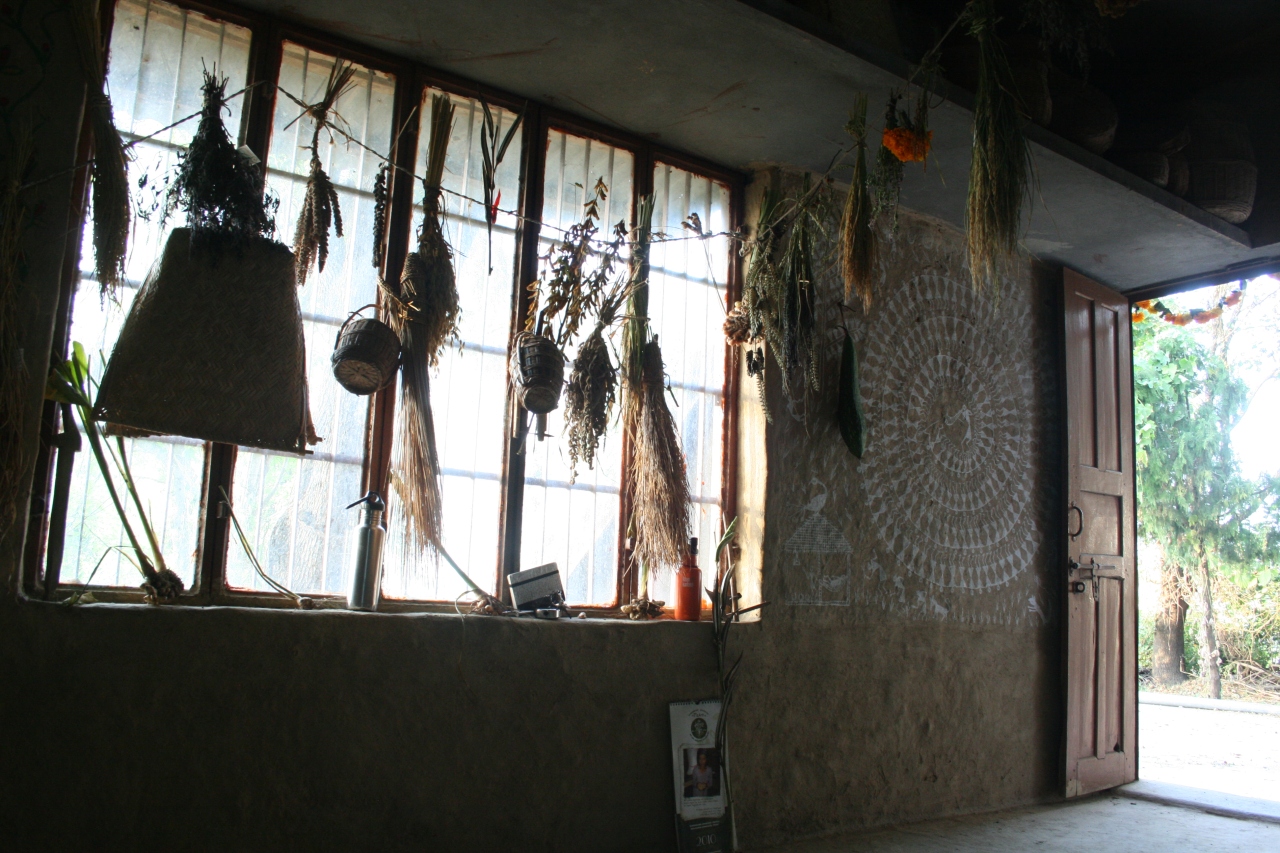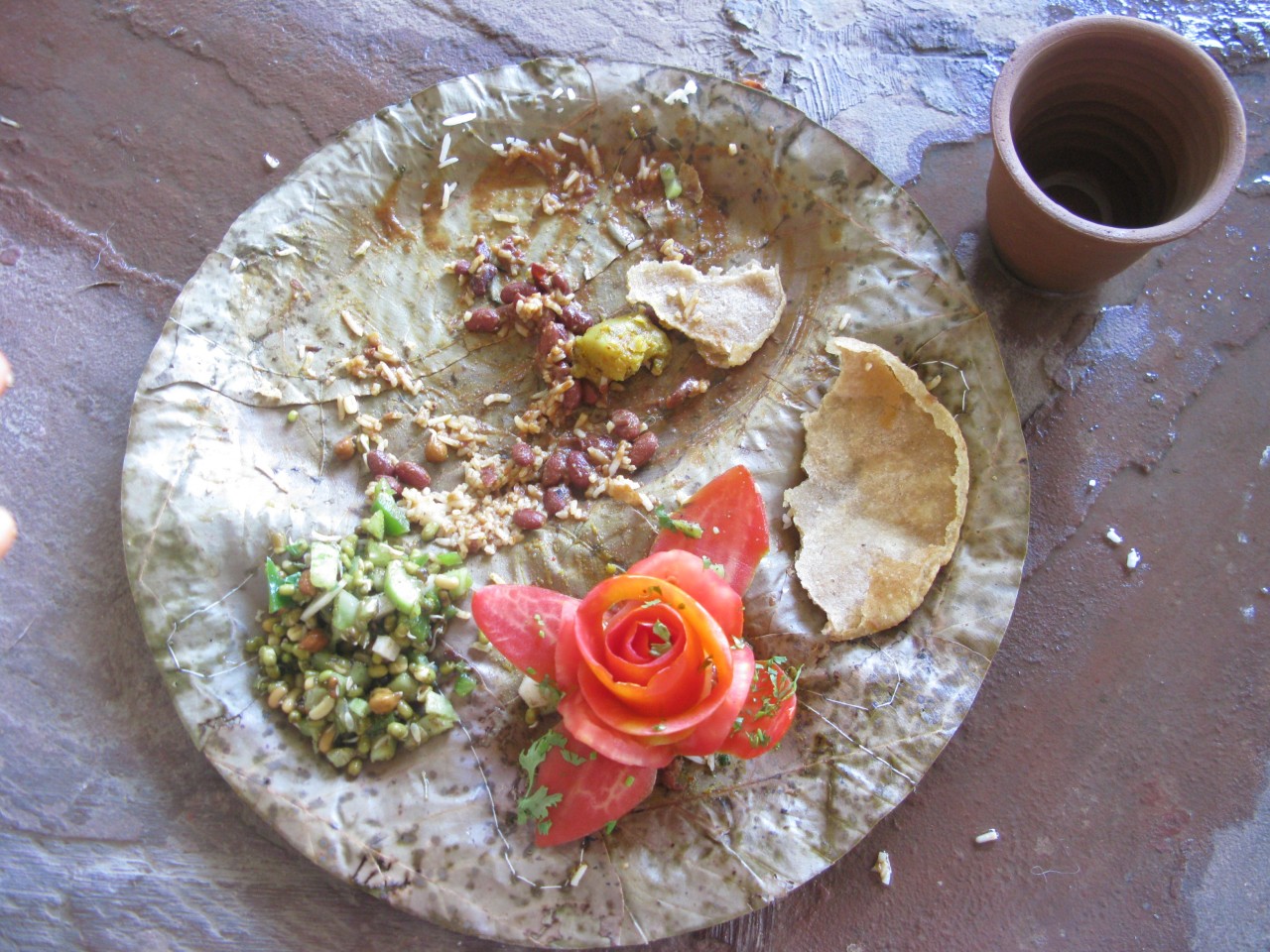From Bangkok we headed to Pun Pun, a small organic farm just outside of Chiang Mai. The farm was started in 2003 by JoJandai and his wife Peggy Reents, with the primary goal of self-reliance. Their philosophy entails a lifestyle that is both sustainable to the environment and to humanity. Their respect for the Earth is …
Organic Farming
Along one of the lush pathways on the Navdanya Biodiversity Conservation Farm, we sat down with Dr. Vandana Shiva to discuss the effects of globalization on small, organic farmers and traditional artisans around the world. Dr. Shiva gave us some great examples of the connections between the slow food and slow fashion movements and elaborates …
Navdanya Biodiversity Conservation Farm
What is Navdanya exactly?
A multitude of things: an NGO, a research center, a school, a restaurant, a shop, an organic biodiversity conservation farm, a model, a gathering place, a skill-share, a community.
During our visit to the Biodiversity Conservation Farm, we had the chance to experience Navdanya as the latter: a gathering place, skill-share, and overall community.
Upon our arrival, we stumbled into the middle of Vasundhara 2012, the silver jubilee celebrating 25 years of the ‘Navdanya movement ‘under leadership of Dr. Vandana Shiva. 200 farmers from all across India attended the gathering, along with Dr. Harak Singh Rawat, Agriculture Minister of Uttarakhand, and Jackie Shroff, Bollywood film actor who will be an Ambassador of Farmers for Organic India. Other representatives from organic companies and movements around the world were present for the conference as well, including Amy’s Organics from California and Isis Noor Yalagi, head of the Jeunesse Enfance Development Environment in Benin. The two-day gathering was, for us, a wonderful introduction to the organization, allowing us to see how far and wide their work has spread.
The 47 acre farm not only produces crops like turmeric and millet to sell at the Navdanya shops in Delhi and Mumbai, but also uses their land for organic experimentation and conservation purposes.
The experimentation field is used to test the effects of a variety of natural fertilizers like vermis wash and CPP (cow pat pit, while also demonstrating the capabilities of multi-cropping to visiting farmers, educating them about the importance of cultivating diverse farmland. If one crop fails, there will always be another to fall back on, therefore, ensuring an income for the farmer. Each crop provides different nutritional elements to the soil and to each other, strengthening the overall performance of the farm.
The conservation field is used to conserve the multitude of seed varieties that have been under genocide, facing extinction due to GMO monocultures imposed on farmers around the world by corporate giants like Monsanto and RiceTex. Navdanya conserves more than 600 varieties of rice by re-planting each one every year in its own 6×8 plot, so that they can continue to adapt to climate changes. The organization advises all farmers to re-plant all of their seeds each year as a way to not only protect the earth’s diversity, but also to protect their own freedom.
The farm also demonstrates and advocates natural pest control methods to other farmers, helping them to veer away from false projections given by pesticide companies. Instead of contaminating one’s farm with harmful chemicals, planting marigolds, camphor trees or neem trees throughout the farm is a an effective method that dates back centuries.
One of the most important aspects of the farm is the Seed Bank. Being the pioneers of seed saving, Navdanya has created a model Seed Bank for other farmers to come and learn how to start one in their community or even in their own home. The organization teaches farmers how to properly dry and store their seeds to ensure adequate germination for the following planting season. Navdanya has helped to create 65 seed banks in 16 states across India, resulting in the successful conservation of more than 2,000 rice varieties, 31 wheat varieties, and hundreds of other cereals, vegetables, oilseeds, and multipurpose plants. They also offer free seeds to farmers, having them agree to either give back some to Navdanya the following year or pass them on to at least two other farmers. Our visit took place right at the start of the harvest, allowing us to experience the stages of saving a seed. We participated in an activity called ‘rice thrashing’ – just as it sounds, cutting down the ready-to-harvest rice. As we harvested each rice variety, they were then bundled, labeled and carried off to a large, outdoor stone floor space to be laid out to dry in the sun. Once ready, a small selection of seeds from each variety is carefully chosen to be stored in the seed bank – proper containers, such as bamboo and cow dung baskets or tightly sealed glass jars are essential to keeping the seeds in good condition for the year. We also had the opportunity to chat with Navdanya’s seed keeper, Bija Didi. Details on our conversation with her will come in our next post!
In having such wonderfully nutritious meals on the farm and learning about the recipes, we took note of the use of onions and turmeric, reminding us of our natural dyeing skills. We then decided to offer a skill-share to the Navdanya community – we conducted a natural dyeing workshop using leftover onion skins and turmeric from our meals, having each person bring an item of white clothing that they would want to dye. It felt great to be exercising our love for creating natural dyes and sharing it with a group of volunteers, interns and staff who have environmental interests. In turn, we also gained skills in bread making, vegetarian Indian cooking and fermenting cabbage and chili.
Our experience at the Biodiversity Conservation Farm not only strengthened our knowledge in organic farming and seed saving, but also in community building and collaborative cooperation. Thank you to all of the Navdanya staff, interns and volunteers who helped to give us such an inspiring and educational visit!
Athina, Bella & Kiyoye
The highlight of our visit to New Delhi was the delicious and nutritious lunch we enjoyed at the Navdanya Slow Food Café. Located in the quaint, outdoor artisan bazaar, Dilli Haat, the café offers a shaded, comfortable space along with a health-wise, organic menu. The small eatery emulates the whole Navdanya philosophy. The glass table …
After a scenic 5-hour drive from Kathmandu to Pokhara, we arrived at the lovely home of our friend Asta man Lama. Asta and his family have shown us such kindness and have been extremely hospitable. They have made us feel incredibly at home, treating us as members of the family.
Asta runs a guest house in Tikhedunga, a village along the trekking trail in the Annapurna range. Chandra Guest House is nestled between two rushing waterfalls and emanates a welcoming energy. The staff have been very open to our research, sharing traditional Nepali recipes and showing us where they grow their food such as, millet, soy beans, ginger and rice.
The lodge also gets their food from 2 local farmers. We had the opportunity to meet with one of them, Santa Bahadun. After visiting Chandra’s garden, we walked up 45 minutes to talk to Santa and his wife, Regina.
We sat down and Santa told to us about the challenges and rewards of being an organic farmer. Globalization has affected Santa and his family. As a father of 9 children, 7 of them have left for bigger cities instead of remaining on the farm to help out and take care of their parents.
Talking with Santa and Regina was a great way to start this project and we look forward to our next stop–Kala Raksha, an embroidery organization situated in Gujarat, India.
Stay tuned!
Athina, Bella and Kiyoye
Santa and Regina
Kiyoye and I have one more day left before we start our 30-hour journey to reach our first stop: Kathmandu, Nepal. (Bella, who lives in Singapore, will be meeting us there.) Things at the moment are very hectic, as we try to make sure we have completed everything on our checklists before we depart to …
Hello everyone! One month, 2 days (and about 30 hours of travel) is what separates Athina, Isabella and me from our Asian adventure! After months of serious planning, I simply can’t wait! Not only am I eager to meet the people we’ll be working with, but I also look forward to exploring their diverse cultures …


